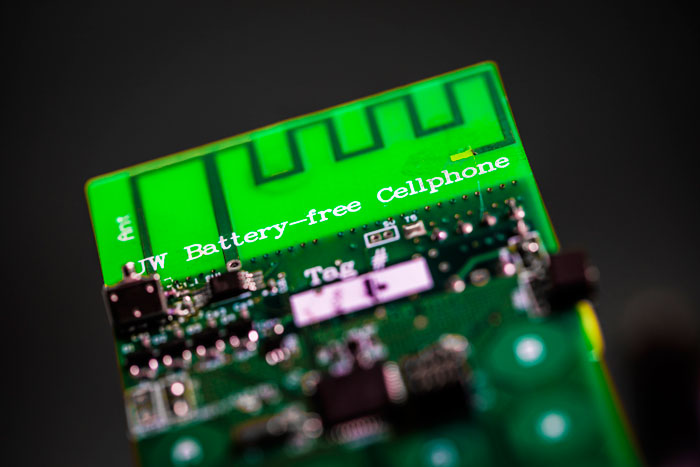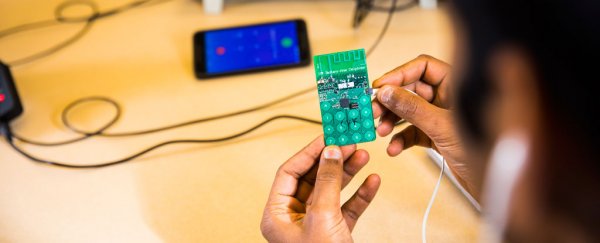If there's a bottleneck in today's smartphones and mobile devices generally, it's battery life – or, rather, the lack of it – but a new innovation from researchers in the US could mean an end to constantly staring at that sad-looking little red battery icon.
Scientists have developed a working battery-free cellphone that harvests all the power it needs to function from ambient radio signals and light, and which is capable of making voice calls using off-the-shelf components available from most electronics stores.
"We've built what we believe is the first functioning cellphone that consumes almost zero power," says one of the researchers, Shyam Gollakota from the University of Washington.
"To achieve the really, really low power consumption that you need to run a phone by harvesting energy from the environment, we had to fundamentally rethink how these devices are designed."
 Mark Stone/University of Washington
Mark Stone/University of Washington
What that meant was doing away with one of the fundamental steps in how conventional cellular transmissions are carried out: the on-the-spot conversion of analogue signals picked up by your phone's microphone into digital data that's relayed across the mobile network.
That conversion is what makes voice calls possible between cell towers and your handset, but it also requires a considerable amount of energy to perform – approximately 800 milliwatts when making a call, which is hundreds of thousands of times more energy than the 3.5 microwatts the battery-free cellphone needs to operate.
In place of the conversion, the device keeps everything analogue, registering tiny vibrations from its microphone during a call, and using a technique called backscatter to transmit the signals to a nearby base station, operating several metres away.
What this means is that while the cellphone is a mobile device, you do need to be in relatively close proximity to the base station for it to work, since it doesn't communicate with regular cell towers – but that's something that could change in the future, the researchers suggest.
"You could imagine in the future that all cell towers or Wi-Fi routers could come with our base station technology embedded in it," says one of the team, Vamsi Talla.
"And if every house has a Wi-Fi router in it, you could get battery-free cellphone coverage everywhere."
 Mark Stone/University of Washington
Mark Stone/University of Washington
While the idea might seem new, it actually harks back to much older uses of radio technology.
In fact, the team's implementation of backscatter principles was actually inspired by an incident during the Cold War, when the Soviets bugged a carving of the Great Seal of United States with a similar kind of battery-less listening device, before presenting it to the American Ambassador in Moscow as a gift.
"My dad was a spy in the Cold War, so I heard stories about the Great Seal bug when I was a kid," one of the researchers, Joshua Smith, told Mark Harris at Wired.
"I wondered if analogue backscatter could be software-controlled and turned from a curiosity for spooks into a technology that everyone could use."
While it's early days and it's unlikely we'll see this kind of battery-free comms incorporated in today's smartphones any time soon – whose screens and other components require far more power to operate – it's a promising direction for future research, especially considering how fundamental basic phone calls are to modern life.
"If you had to pick one device to make battery-free, what would you pick?" says Smith.
"A cell phone is one of the most useful objects there is. Now imagine if your battery ran out and you could still send texts and make calls."
The findings are reported in Proceedings of the ACM on Interactive, Mobile, Wearable and Ubiquitous Technologies.
